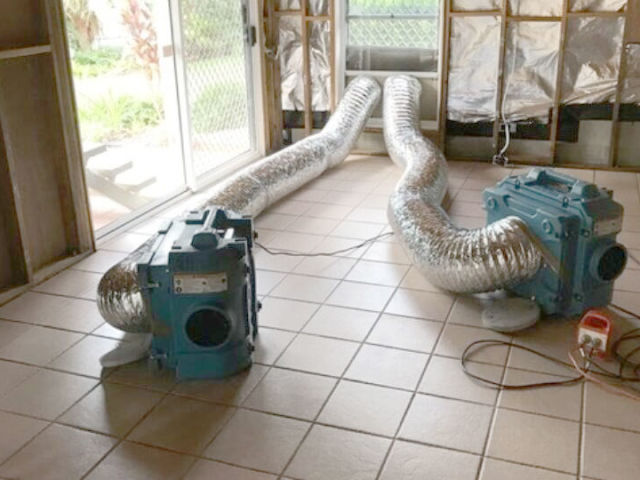
Health problems caused by mold include allergic reactions, asthma attacks, and upper respiratory infections. It has become increasingly popular for homeowners and contractors to use air scrubbers and air purifiers to combat mold. A negative air machine pushes air through a series of filters to capture particles such as dust, pollen, and mold spores. The filtered air returns to the room. Most air scrubbers have a multi-filter system consisting of.
- Pre-filter – Captures large particles like hair, lint, etc.
- HEPA filter – Removes over 99.97% of particles 0.3 microns or larger. It includes most mold spores.
- Carbon filter – Absorbs gases, smells, and chemicals.
When used properly, air scrubbers can eliminate mold spores from the air. They have some limitations.
Limitations of air scrubbers
While air scrubbers capture airborne mold spores, they do not kill or remove mold growth itself. Mold can still grow inside walls, under flooring, or elsewhere while an air scrubber runs. If the HVAC system itself has significant mold contamination, running an air scrubber will simply filter and recirculate the mold spores throughout the house. Mold growth must be remediated for lasting results. These scrubbers are only effective when run continuously at an appropriate rate for the size of the affected area. They do not permanently remove mold spores from a home. As soon as the unit is turned off, spores can reenter the air if the source hasn’t been fixed. More information is available at Damage Control.
Key criteria for effectively using air scrubbers
- Identify and fix all mold growth sources first – Air scrubbers work best as supplemental support after any mold damage has been properly remediated, not as the only measure taken. Always remove visibly contaminated materials and address leaks or moisture sources first.
- Adequately size the unit – Make sure to size your air scrubber based on the dimensions of the affected area and the type of space. More capacity is needed for larger spaces. Follow manufacturer guidelines for matching unit capabilities to space size.
- Strategically place the unit – The intake for the air scrubber should be near the source of contamination for the best spore filtering. The outtake should point away from moldy areas to avoid recirculating spores. Create a “clean-to-less-clean” airflow pattern in the space.
- Keep doors and windows closed – Closing off a room helps the air scrubber work efficiently to filter all the air in that space and maintain proper air pressure differentials. Open doors and windows can allow contaminated air to flow in from other areas, reducing the machine’s effectiveness.
- Continue running until spores are gone – After remediation, air scrubbers may need to run non-stop for days or weeks based on the severity of contamination. Use mold testing kits at the end to confirm spore levels are back to an acceptable range before discontinuing use.



